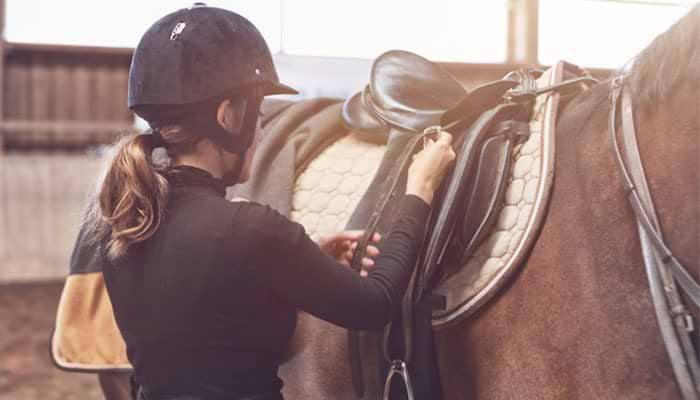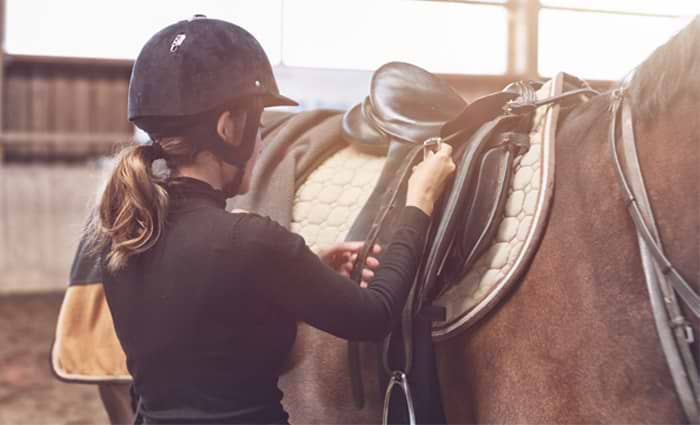
The typical British weather can make horse care a challenge, but it's not just your horse that needs looking after! Harsh weather conditions can have a detrimental effect on your riding tack as well.
Looking after it properly is extremely important, since it's one of the most expensive equestrian purchases you're ever likely to make. Leather wear requires the right maintenance to make sure it lasts as long as possible. Caring for your bridle, saddle and stirrup leathers will keep them in good condition for many seasons to come.

© XtravaganT / Adobe Stock
How to clean
For some people, looking after riding tack is something that doesn't come naturally. Working with horses requires time, knowledge and a strong work ethic. Caring properly for riding gear is the key to not having to replace it prematurely!
In the case of leather gear and horse tack, although it's an incredibly durable material, it must be looked after properly in order to perform at the highest level. Leather saddles, bridles and other leather tack will last for years when you clean and condition them regularly – this will also help to maintain their suppleness, but take care not to over-soften the leather, as this can cause problems and possibly cause the leather to deteriorate more quickly.
Use specific leather cleaners and restorers for all your leather gear - anything else can cause more harm than good. Waterproofing wax is a good choice for leather to protect it after cleaning. Choose a non-softening, waterproof treatment for your riding tack and also for riding boots. Take care to ensure the item is properly cleaned before you waterproof it, otherwise it's like waxing a dirty car - it won't have the desired effect!
How to store
Store your riding tack in a clean and dry place. When properly stored, it can easily last for more than a decade. Make sure your tack is stored in a clean condition - never put it away dirty!
Everything from saddles to bridles and spare stirrup leather should be stored in an easily accessible place. The most effective storage solution is to hang tack racks or hooks on the walls. If you have enough room, each horse should have their own rack.
Developing your own efficient system for organising and storing tack goes a long way towards making life at the stables simpler and more fun.
Everyday tack checks
Riding tack is safety equipment and is too important to our well-being to take risks. Thus, it's important to carry out simple everyday checks to make sure nothing is amiss.
Saddles and bridles both need to have their leather checked for safety reasons. If you clean your tack daily after use, the leather will be supple. Find out by using both hands to bend and fold it, checking for cracks.
Don't forget to check the places you don't immediately see, such as the folds in the stirrup leathers. Unbuckle the bridle buckles to feel the leather under there - also the leather wrapped around the halter. The folded areas are most likely to snap!
Check all the stitching and if you spot any faults, have things properly repaired before you use the tack.
Check the billet straps on the saddle and the stirrup leather - if the holes have an oval appearance, it means they are slightly stretched, but safe. However, if the leather has started to get narrow because it's over-stretched, it's time to replace it.
Also check the metal attachments for the stirrup leathers including the hinges, grommets and other metal rivets that can wear over time.
Applying a temporary fix to riding tack can cause more damage in the long run, and it can also create very real health and safety hazards, so make sure you have any deteriorating tack repaired before it's too late.
MA Grigg’s country store, in picturesque Cornwall, stocks only the highest-quality equestrian products and clothing. Visit Griggs Equestrian for everything you need to look after our equine friends.





